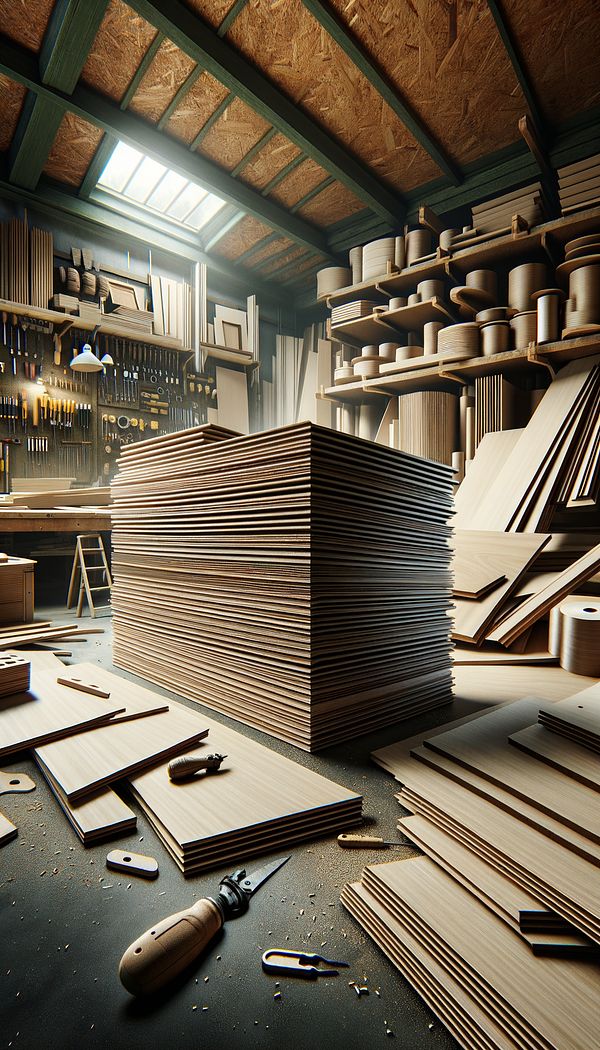What is Pressboard?
Pressboard is a type of engineered wood product made from wood fibers bonded together under heat and pressure.
Description
Pressboard, also known as particleboard or chipboard, is a versatile material widely used in interior design and furniture manufacturing. It is created by combining wood particles, such as wood chips, sawmill shavings, or even sawdust, with a synthetic resin or other suitable binder, which are then pressed and heated to form rigid sheets. This process allows for the recycling of wood waste, making pressboard an eco-friendly choice for those conscious of material sustainability.
Due to its manufacturing process, pressboard offers a uniform and consistent texture that lacks the natural knots and irregularities found in solid wood. This characteristic makes it an ideal substrate for veneers or laminates, as it provides a smooth surface for these finishes to adhere to. Additionally, the dense, flat characteristics of pressboard make it highly suitable for creating flat-packed furniture and custom-built fixtures.
However, it's important to note that while pressboard is economical and versatile, it may not possess the same strength and durability as solid wood or higher quality engineered woods like plywood. Therefore, its use is more common in scenarios where cost is a significant factor, and the application doesn't demand extensive structural strength. Pressboard is often found in budget-friendly home furnishings, cabinetry, countertops, and various decorative elements within interior spaces.
Usage
Pressboard is frequently used in the design and construction of affordable furniture, kitchen cabinets, and storage units. It serves as a cost-effective alternative to solid wood in projects where the end product will be painted or covered with a laminate or veneer. Additionally, its uniform texture and workability make it a popular choice for creating intricate designs, such as patterned wall treatments and finishes or decorative objects, where the consistency and smooth surface of the material are crucial.
FAQs
-
Is pressboard the same as plywood?
No, pressboard and plywood are different materials. Plywood is made by gluing together thin layers of wood veneers, which gives it more strength and durability than pressboard, which is made from wood particles bonded under pressure.
-
Can pressboard be used in outdoor applications?
Pressboard is not generally recommended for outdoor applications due to its susceptibility to moisture, which can cause swelling, warping, or disintegration. For outdoor projects, materials designed to withstand the elements are more suitable.
-
How can I protect pressboard furniture from damage?
To protect pressboard furniture, avoid placing it in damp areas and use coasters or mats to prevent moisture from cups or vases. Additionally, you can apply a water-resistant finish or paint to create an extra layer of protection against moisture.
Practical Application
When working with pressboard, consider its limitations and strengths. For indoor projects where cost and a smooth surface are prime considerations, pressboard is an excellent choice. Always ensure it is properly sealed or finished if moisture exposure is a possibility. For applications requiring more durability or strength, consider other materials and textiles, such as solid wood or plywood.
-
Furniture Types599 articles
-
Decorative Objects240 articles
-
Materials & Textiles360 articles
-
Wall Treatments & Finishes157 articles
-
Lead TimeLead time is the duration between the initiation and completion of a process.
-
VitrineA vitrine is a glass display cabinet designed to showcase and protect objects or collections.
-
BattingBatting is a layer of material used to provide padding and insulation.
-
NSF - National Sanitation FoundationNSF International is a global independent organization that develops standards, and tests and certifies products in the interest of public health and safety.
-
Bed SkirtA bed skirt is a decorative fabric panel that hangs between the mattress and the floor.
